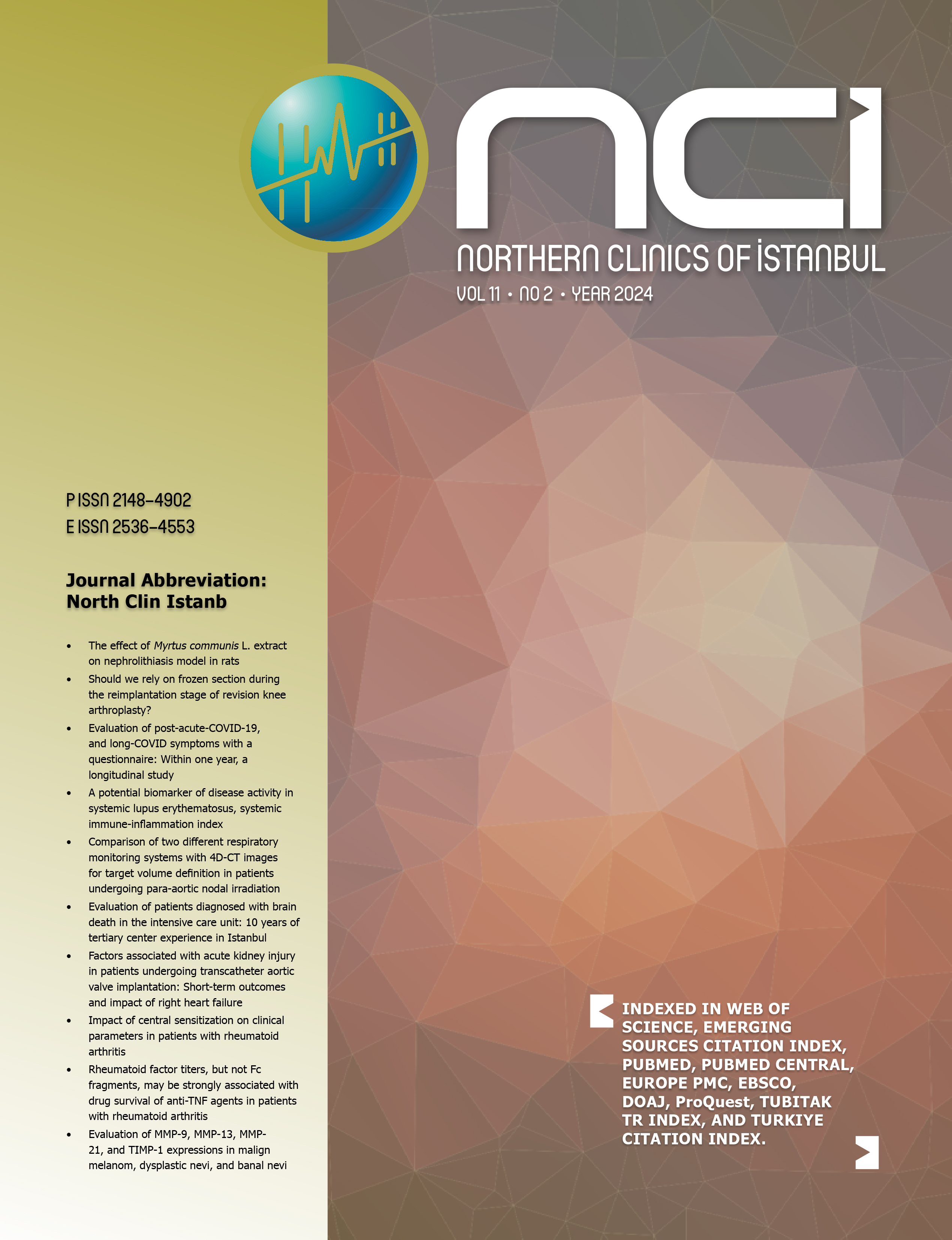Candida auris infection at a pediatric burn center: Treatment and infection control measures
Seval Ozen1, Belgin Gulhan1, Sabri Demir2, Sema Turan Uzuntas3, Aysun Yahsi1, Saliha Kanik Yuksek1, Tugba Erat1, Ahmet Yasin Guney1, Latife Guder1, Gulsum Iclal Bayhan1, Bedia Dinc3, Mujdem Nur Azili2, Emrah Senel2, Aslinur Ozkaya Parlakay11Department of Pediatric Infectious Diseases, Ankara Bilkent City Hospital, Ankara, Turkiye2Department of Pediatric Surgery, Ankara Bilkent City Hospital, Ankara, Turkiye
3Department of Medical Microbiology, Ankara Bilkent City Hospital, Ankara, Turkiye
Objective: Candida auris, a novel species, has been increasingly associated with hospital outbreaks worldwide in recent years. C. auris is regarded as a global health problem due to issues with the identification of C. auris, variable antifungal resistance profiles and the requirement for infection prevention and control (IPC) measures. With this study, we aimed to present our experience with two patients with C. auris fungemia who were referred to the Pediatric Burn Center of our hospital at different timepoints and share the antifungal treatment strategy and IPC management policies implemented in the clinic.
Methods: C. auris isolates were identified using MALDI-TOF MS (VITEK MS, bioMérieux, France). Antifungal susceptibility tests were performed at the Turkish Public Health Institution (THSK) using the broth microdilution (BMD) method. The BMD was carried out in accordance with the Clinical and Laboratory Standards Institute procedures.
Results: A patient (3-year-old girl) with C. auris which was identified at an external center and negative fungal screening results was transferred to our pediatric burn center. On the 41st day of her hospitalization, she was diagnosed with catheter-related bloodstream infection (CRBSI) by C. auris. She received antifungal treatment for a total of 52 days, including caspofungin for 12 days, followed by micafungin for 40 days. Three months after the detection of the index case, a second patient (2-year-old girl) was diagnosed with CRBSI by C. auris on the 27th day of hospitalization. This patient received antifungal treatment for a total of 42 days, including 30 days of combination therapy (liposomal amphotericin B and voriconazole). Immediately after the recognition of the index C. auris case, Infection prevention and control (IPC) measures were formulated and implemented. IPC measures included strict isolation of the patient infected with C. auris, and screening of all other patients and the environment. C. auris was not detected in any of the patients screened. None of the environmental swabs tested positive for C. auris.
Conclusion: Collaboration between clinical microbiology laboratories and the IPC committee is essential for making correct and early diagnosis, optimizing the management of precautions and reducing the spread of infection in the hospital.
Keywords: Burn; candida auris; child; fungemia; infection control.
Bir pediatrik yanık merkezinde candida auris enfeksiyonu: Tedavi ve enfeksiyon kontrol önlemleri
Seval Ozen1, Belgin Gulhan1, Sabri Demir2, Sema Turan Uzuntas3, Aysun Yahsi1, Saliha Kanik Yuksek1, Tugba Erat1, Ahmet Yasin Guney1, Latife Guder1, Gulsum Iclal Bayhan1, Bedia Dinc3, Mujdem Nur Azili2, Emrah Senel2, Aslinur Ozkaya Parlakay11Ankara Bilkent Şehir Hastanesi, Çocuk Enfeksiyon Hastalıkları Kliniği, Ankara2Ankara Bilkent Şehir Hastanesi, Çocuk Cerrahi Kliniği, Ankara
3Ankara Bilkent Şehir Hastanesi, Tıbbi Mikrobiyoloji Kliniği, Ankara
Amaç: Yeni bir tür olan Candida auris, son yıllarda dünya genelinde hastane salgınlarıyla giderek daha fazla ilişkilendirilmektedir. C. auris'in tanımlanmasıyla ilgili sorunlar, değişken antifungal direnç profilleri, enfeksiyon önleme ve kontrol (EÖK) önlemlerinin artmış önemi nedeniyle küresel bir sağlık problemi olarak görülmektedir. Bu çalışmada, hastanemizin Çocuk Yanık Merkezinde farklı zamanlarda C. auris fungemisi olan iki hastamızı, antifungal tedavi stratejisini ve klinikte uygulanan EÖK önlemlerini paylaşmayı amaçladık.
Yöntemler: C. auris'in tanımlanması, MALDI-TOF MS (VITEK MS, bioMérieux, France) ile yapıldı. Broth mikrodilüsyon yöntemi (BMD) ile antifungal duyarlılık testleri THSK (Türkiye Halk Sağlığı Kurumu) Laboratuvarında çalışıldı. BMD, Klinik ve Laboratuvar Standart Enstitüsü prosedürlerine göre çalışıldı.
Sonuçlar: Dış merkezde C. auris saptanan ve fungal tarama sonuçları negatif olan hasta (3 yaşında kız) pediatrik yanık merkezimize sevk edildi. Yatışının 41. gününde C. auris etkenli kateter ilişkili kan dolaşımı enfeksiyonu (KİKDE) tanısı konuldu. 12 gün kaspofungin, ardından 40 gün mikafungin olmak üzere toplam 52 gün antifungal tedavi aldı. İndeks vakanın saptanmasından üç ay sonra, başka bir hastaya (2 yaşında kız) yatışının 27. gününde etkeni C. auris olan KİKDE teşhisi kondu. Bu hasta, 30 günlük kombinasyon tedavisi (lipozomal amfoterisin B ve vorikonazol) dahil olmak üzere toplam 42 gün antifungal tedavi aldı. İndeks C. auris vakasının tanımlanmasının hemen sonra, EÖK önlemleri belirlenip uygulandı. C. auris hastasına sıkı temas izolasyonu, diğer hastaların ve çevrenin C. auris açısından taraması yapıldı. Tarama sırasında alınan örneklerde, hastalardan ve çevreden alınan sürüntülerin hiçbirisinde C. auris saptanmadı.
Sonuç olarak, klinik laboratuvarlar, antifungal yönetim ve hastane enfeksiyon önleme ve kontrolü arasındaki iş birliği, teşhis ve yönetimi optimize etmek ve hastane yayılımını azaltmak için gereklidir. (NCI-2023-1-2)
Anahtar Kelimeler: Yanık; candida auris; çocuk; fungemi; infeksiyon kontrol.
Manuscript Language: English





















